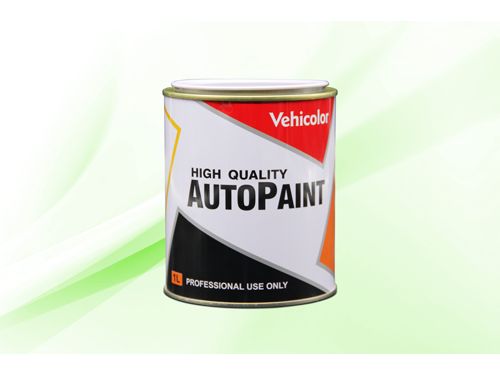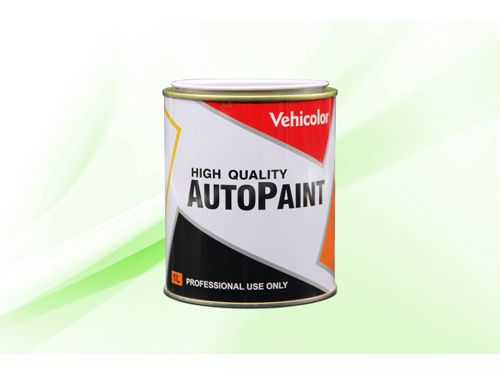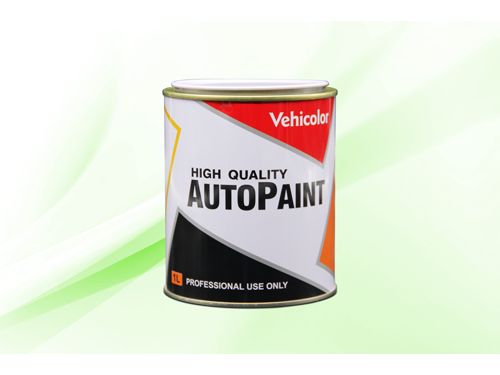
Substrates
Steel panel, iron panel, aluminum panel, fiberglass, wood surface.
Mixing ratio (Weight)
Polyester Putty: Hardener = 100:2
Layer Thickness
Putty can be applied in several thin coats. After each of them the product should cure. Do not extend thickness of 5 mm.
Pot life
2–7 minutes at 25°C.
Application
Clean the surface of oil, rust, old paint, and moisture. Make sure it is dry and clean before applying the putty.
Mix the putty with hardener at a 100:2 ratio until the color is even. Use it within the working time; otherwise, it will harden and become unusable.
Apply the mixed putty to the repair area. It’s recommended to apply a rough base layer first, then a thin finishing layer to reduce pinholes.
After full curing, sand the putty surface to the desired finish.
Drying time
30–40 minutes at 25°C.
Sanding
Coarse sanding (dry): P80–P120
Finishing sanding (dry): P120–P320
Shelf life
1 year in unopened containers when stored in cool, dry conditions.
Health and Safety
For full Health and Safety information please refer to Material Safety Data Sheet (MSDS)
Observe the precautionary notices displayed on the container.
Good ventilation must be provided in the working environment.

Substrates
Vehicolor NC Filling Putty can be applied over 2K putties, primers, and old paints previously sanded properly.
Application
Apply by spreader. Apply in 1–2 thin coats.
When necessary, repeat the operation more times.
Allow drying for 5–10 minutes between coats.
Scrape Tool
Putty spreader
Drying time
25 minutes at 23°C
Sanding
Machine dry sanding: P400–P500
Manual wet sanding: P800 or P1000
Shelf life
2 years in unopened containers when stored in cool, dry conditions
Health and Safety
For full Health and Safety information please refer to Material Safety Data Sheet (MSDS)
Observe the precautionary notices displayed on the container
Good ventilation must be provided in the working environment

Substrates
Steel panel, galvanized panel, iron panel, aluminum panel, fiberglass.
Mixing ratio (Weight)
Body Filler: Hardener = 100:2
Layer Thickness
Putty can be applied in several thin coats. After each of them, the product should cure. Do not extend thickness of 5 mm.
Pot life
2–4 minutes at 25°C.
Application
Clean the surface of oil, rust, old paint, and moisture. Make sure it is dry and clean before applying the putty.
Mix the putty with hardener at a 100:2 ratio until the color is even. Use it within the working time; otherwise, it will harden and become unusable.
Apply the mixed putty to the repair area. It’s recommended to apply a rough base layer first, then a thin finishing layer to reduce pinholes.
After full curing, sand the putty surface to the desired finish.
Drying time
20–30 minutes at 25°C.
Sanding
Coarse sanding (dry): P80–P120
Finishing sanding (dry): P120–P320
Shelf life
1 year in unopened containers when stored in cool, dry conditions.
Health and Safety
For full Health and Safety information please refer to Material Safety Data Sheet (MSDS)
Observe the precautionary notices displayed on the container.
Good ventilation must be provided in the working environment.

Substrates
Steel panel, galvanized panel, iron panel, aluminum panel, fiberglass.
Mixing ratio (Weight)
Lightweight Body Filler: Hardener = 100:2
Layer Thickness
Putty can be applied in several thin coats. After each of them, the product should cure. Do not extend thickness of 5 mm.
Pot life
2–4 minutes at 25°C.
Application
Clean the surface of oil, rust, old paint, and moisture. Make sure it is dry and clean before applying the putty.
Mix the putty with hardener at a 100:2 ratio until the color is even. Use it within the working time; otherwise, it will harden and become unusable.
Apply the mixed putty to the repair area. It’s recommended to apply a rough base layer first, then a thin finishing layer to reduce pinholes.
After full curing, sand the putty surface to the desired finish.
Drying time
20–30 minutes at 25°C.
Sanding
Coarse sanding (dry): P80–P120
Finishing sanding (dry): P120–P320
Shelf life
1 year in unopened containers when stored in cool, dry conditions.
Health and Safety
For full Health and Safety information please refer to Material Safety Data Sheet (MSDS)
Observe the precautionary notices displayed on the container.
Good ventilation must be provided in the working environment.